Cracks emerge in Russia’s ‘Digital Iron Curtain’
Kremlin-controlled outlets maintain presence on Facebook and Twitter despite the platforms being banned in Russia.
Cracks emerge in Russia’s ‘Digital Iron Curtain’
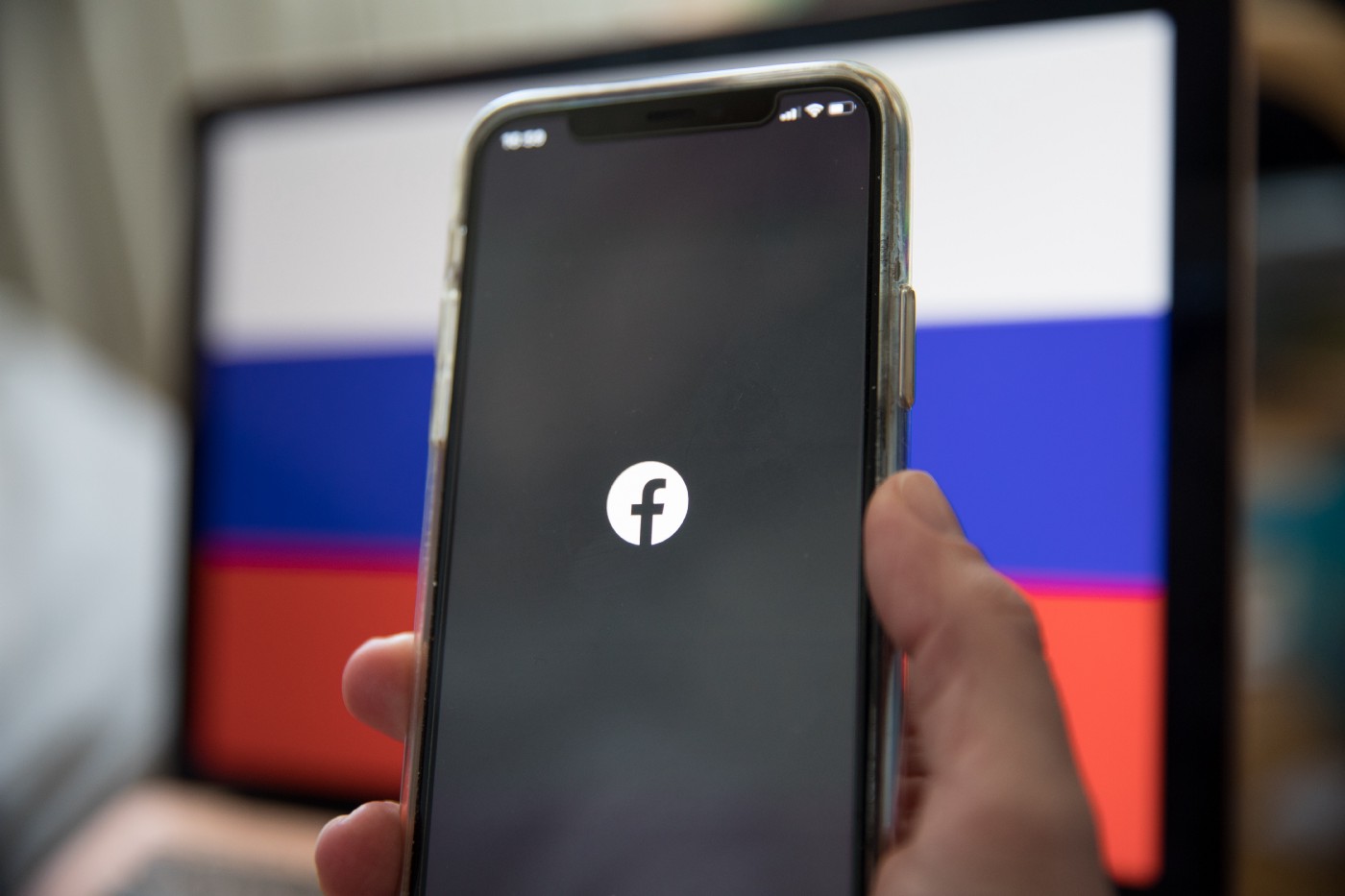
BANNER: (Source: Reuters Connect/Michael Kuenne/PRESSCOV/Sipa USA)
Kremlin-controlled outlets maintain presence on Facebook and Twitter despite the platforms being banned in Russia
The Kremlin’s decision to ban Facebook and Twitter in Russia is proving ineffective, as even Kremlin-controlled media continue to operate on the platforms. Russia’s war against Ukraine has created unprecedented shifts in the digital environment; social media platforms have taken action to limit the spread of Russian disinformation by labeling state-controlled media outlets and removing advertising opportunities, while Western governments have targeted Russian state media with sanctions. The Kremlin has retaliated by banning Facebook, Instagram, and Twitter. These policies have been dubbed the “digital iron curtain,” a reference to the Iron Curtain of the Cold War era.
To understand how these actions impact the information environment, the DFRLab analyzed three of the most popular Kremlin-controlled media outlets as well three independent Russian media outlets to determine where most of the traffic for these websites was coming from. For Kremlin-controlled outlets, VKontakte and Yandex were the primary drivers of traffic, but Twitter and YouTube also drove traffic to the websites. For independent Russian media outlets, Wikipedia and Twitter drove much of the traffic, but Vkontakte and Yandex were also traffic drivers.
Kremlin-controlled media outlets could be maintaining their presence on Western social media platforms to reach Russians outside of Russia. While independent Russian media can reach Russians in the country through Vkontakte and virtual private networks (VPNs), which have seen downloads in Russia “skyrocket.” This reveals that there are “cracks” in the digital iron curtain, allowing Kremlin propaganda to reach audiences abroad, and independent Russian media outlets to reach domestic audiences.
Kremlin media outlets promoted on Kremlin-controlled platforms
In Russia, the Kremlin-controlled media outlets that receive the most web traffic among news and media publishing websites are RIA Novosti, Lenta and RBC, according to SimilarWeb.

RIA Novosti, Lenta and RBC generate much of their traffic via website referrals. Yandex, a search engine in Russia akin to Google, drives most of traffic to the three Kremlin-controlled websites. VKontakte, a Russia-based social media platform akin to Facebook, drives most of the social traffic to the three media outlets. At the same time, all three media outlets still garner social traffic from Facebook and Twitter, which are currently banned in Russia. The DFRLab has previously reported on Russians using VPNs to access banned platforms.
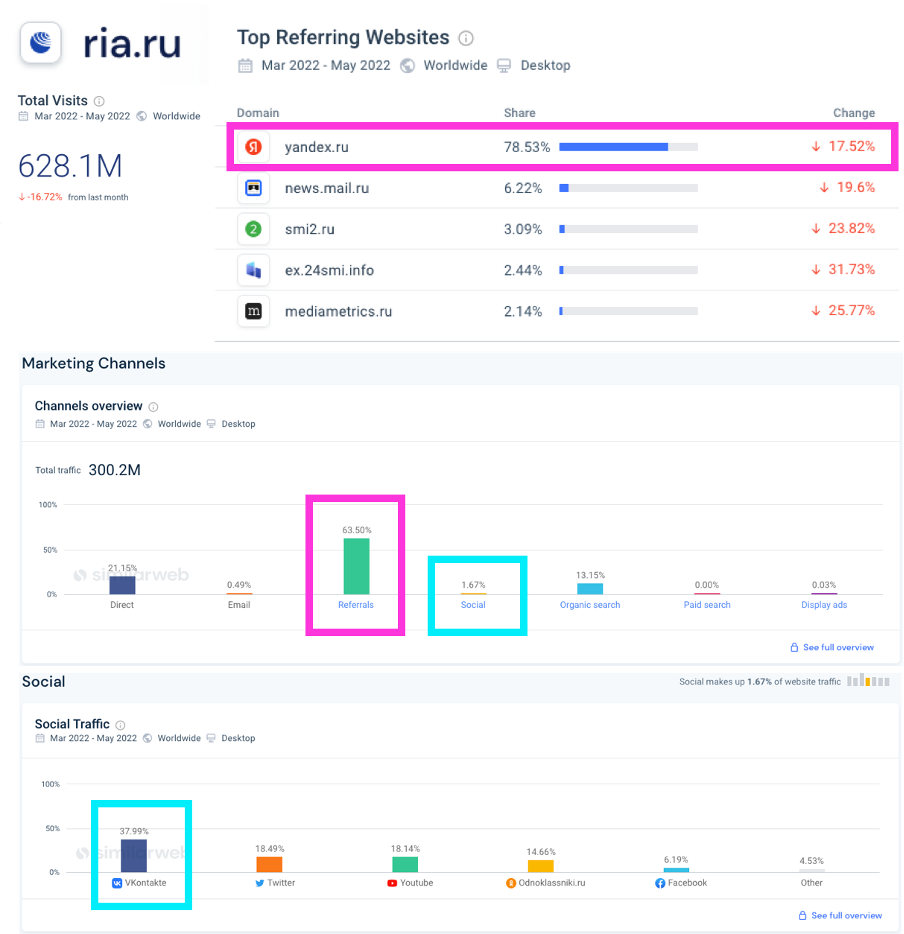
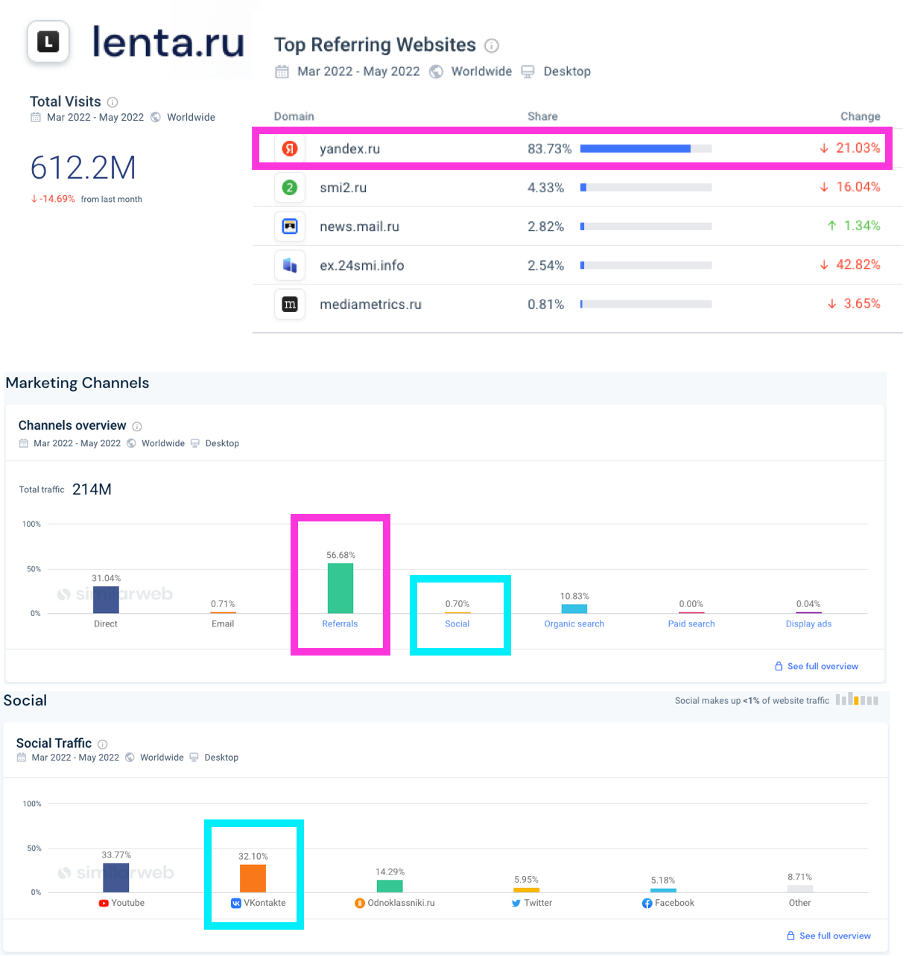

Despite Facebook being declared an “extremist organization” in Russia on March 21, RIA Novosti and RBC continue to post on their Facebook pages. Lenta is the only outlet among the three to announce that it would stop posting on Facebook.
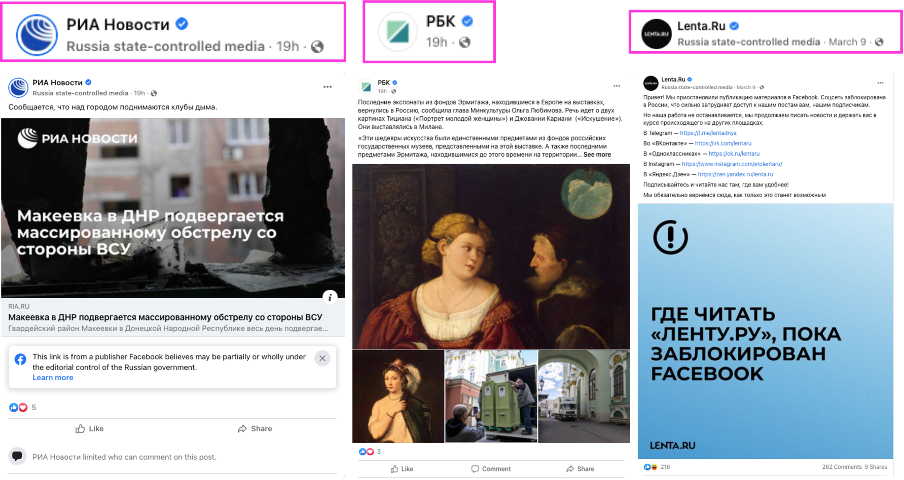
RIA Novosti, RBC and Lenta all continue to post on Twitter as well. RIA Novosti has been blocked in certain countries, but outside of those countries the account is still active. Displaying the different approaches to Russian media, Facebook labeled Lenta as state-controlled media, but Twitter did not.

Independent Russian media promoted on Western-origin platforms
The DFRLab also analyzed three independent Russian media outlets — Meduza, Mediazona and The Insider. A query conducted using SimilarWeb revealed that Wikipedia was the primary referral website for Meduza and The Insider, while Yandex was the top referral website for Mediazona. For all three websites, the largest driver of social traffic was Twitter.


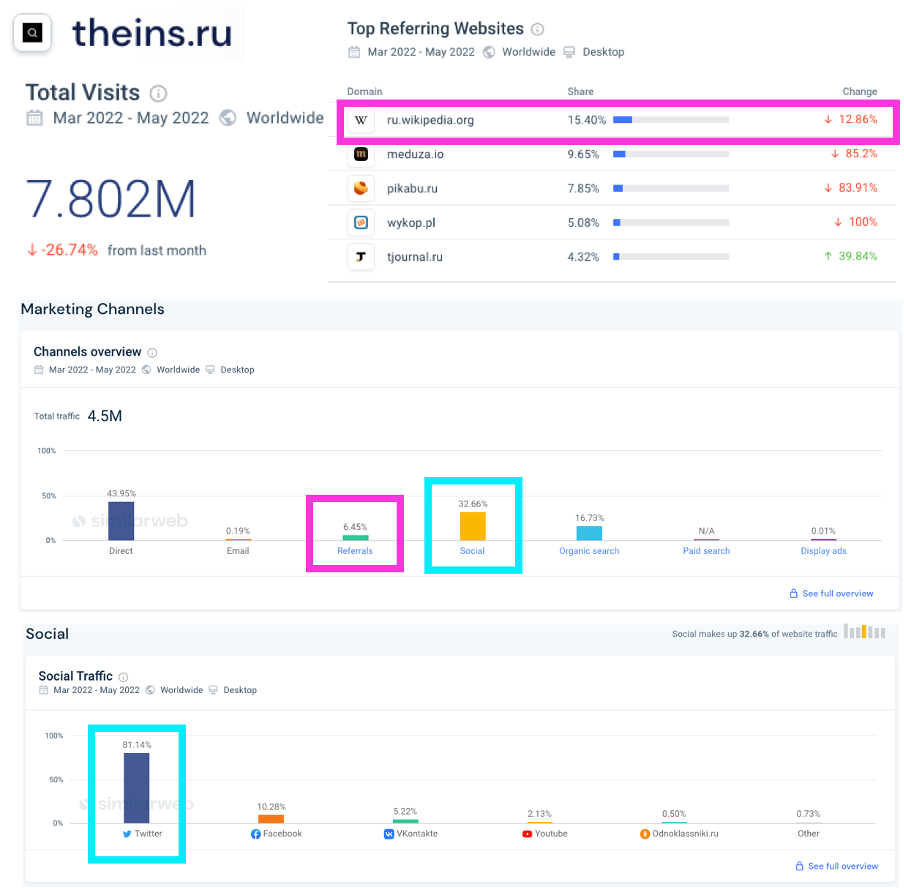
Independent Russian media website are becoming increasingly precarious. In the weeks after Russia invaded Ukraine, three major independent media outlets in Russia — Novaya Gazeta, Ekho Moskvy and Dozhd — announced they were suspending or ending operations. Meduza and The Insider have operated from Latvia since 2014 and 2013, respectively. Mediazona was founded in 2014 in Russia, but it is not known where the outlet operates from.
Wikipedia is also facing pressure from Roskomnadzor, Russia’s telecommunications watchdog, for publishing articles about the war in Ukraine on the Russian version of Wikipedia. On March 31, Roskomnadzor announced that it would fine Wikipedia RUB 4,000,000 (nearly USD $50,000) for not deleting “inaccurate information, on the subject of a special military operation of the RF Armed Forces in Ukraine, aimed at misinforming Russian users.” Earlier, on March 1, Wikipedia in Russia published the first notification it had received from Roskomnadzor, which threatened to block the crowd-sourced encyclopedia in Russia. In response, Wikipedia published an article in Russian explaining “what to do if Wikipedia is blocked.”
Kremlin-controlled media outlets pushed out of Facebook
Despite Kremlin-controlled media maintaining a presence on Facebook, their audience has declined. Meanwhile, independent Russian media outlets have grown their Facebook audience.
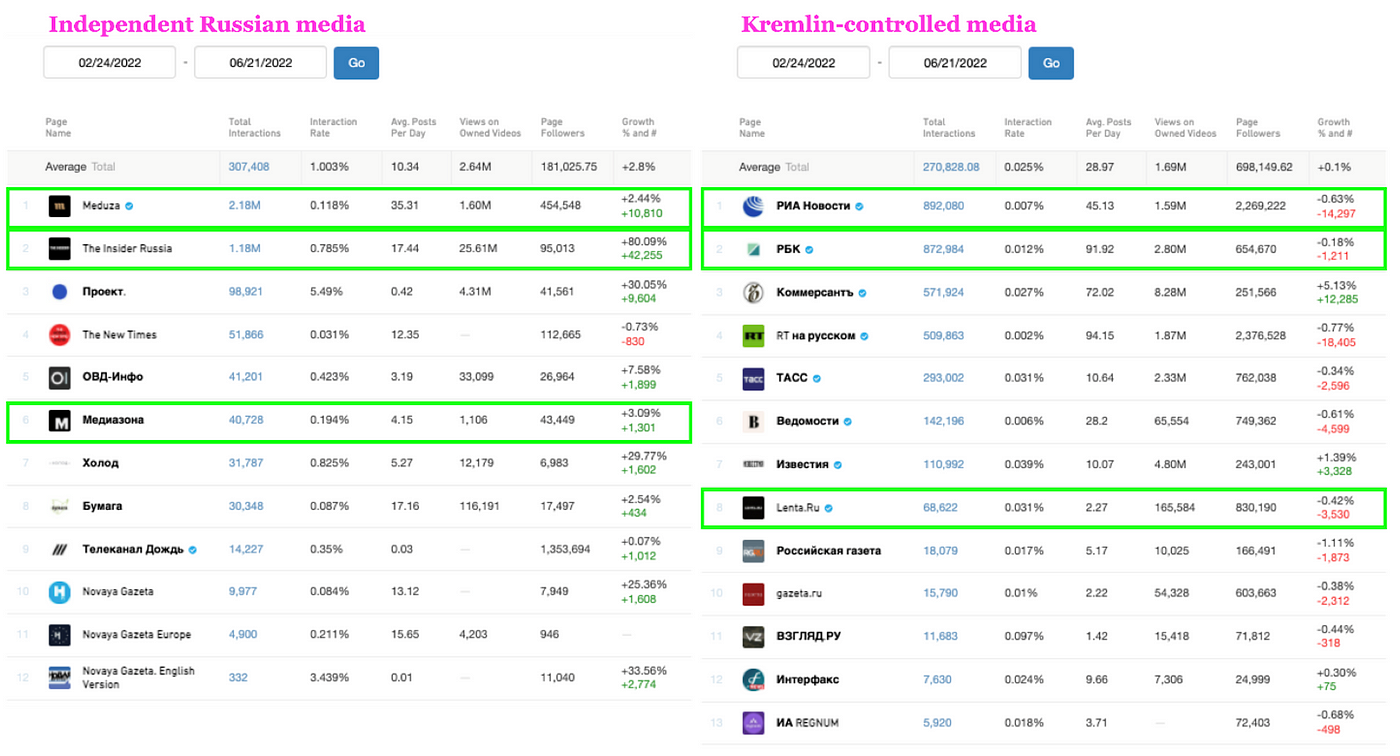
In early March, many Kremlin-controlled media outlets, such as Lenta, Gazeta, Vzglyad, Regnum, Interfax, Rosiyskaya Gazeta, and TASS, announced that they would cease their activity on Facebook. For the outlets that continue to operate on Facebook, they have all seen a decline in their audience, with exception of Kommersant and Izvestiya.
The DFRLab also noticed that some media outlets that continue to operate on Facebook, like RIA Novosti, and RBC, have removed the Facebook share button from their websites. Interestingly, while Twitter has blocked RIA Novosti in certain countries, the website continues to display the Twitter share button.

These changes reflect the new reality of the Russian web. VKontakte went under Kremlin control in December 2021, when Sogaz, a natural gas company with ties to Russian President Vladimir Putin, bought a majority stake in the company. The chief executive of the social network is Vladimir Kirienko, the son of Sergey Kirienko, who serves the First Deputy Head of the Presidential Administration.
On April 28, Yandex announced that it had reached an “agreement in principle with VK to sell Yandex’s news aggregation platform and infotainment service Zen.” On May 5, Meduza, an independent media outlet in Russia, published an investigation that suggested Yandex’s news aggregator determined the top five websites displayed in a search using a whitelist of fifteen Kremlin-approved media outlets. Meduza cites an unnamed source to report that the whitelist included Izvestiya, RIA Novosti, TASS, Interfax, Rosiyskaya Gazeta, Kommersant, Vedomosti, RBC, Gazeta, RT, Lenta, Regnum, Nezavisimaya Gazeta, and Vzglyad.
The DFRLab’s analysis reveals that despite Russia enacting restrictions on social media websites, Kremlin-controlled media continue to utilize the platforms, often to spread Kremlin narratives.
Cite this case study:
Nika Aleksejeva, “Cracks emerge in Russia’s ‘Digital Iron Curtain,’” Digital Forensic Research Lab (DFRLab), July 7, 2022, https://medium.com/dfrlab/cracks-emerge-in-russias-digital-iron-curtain-8d5bd791815a.

